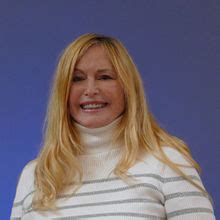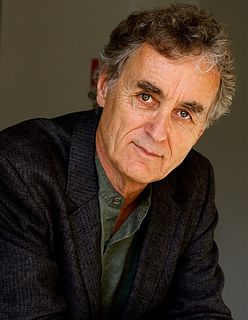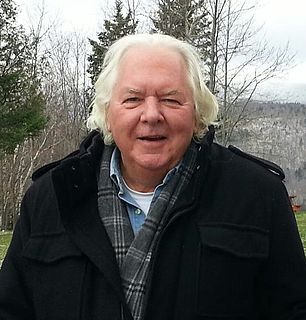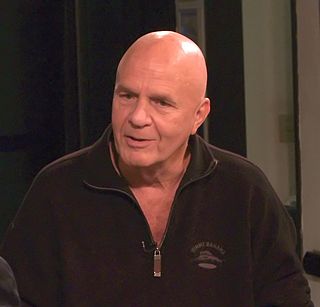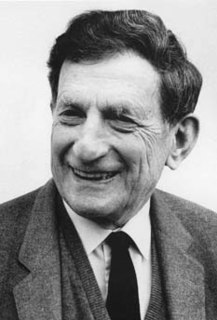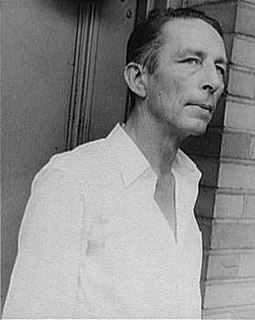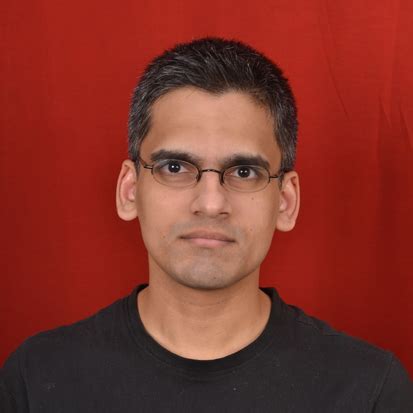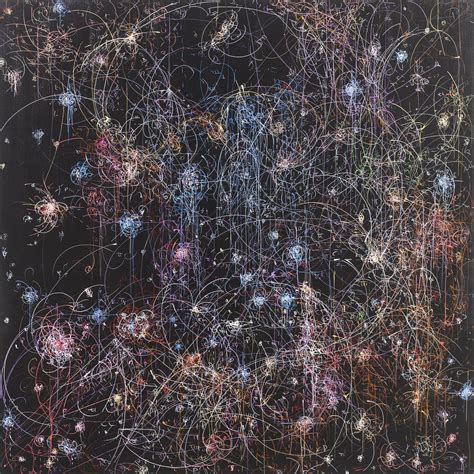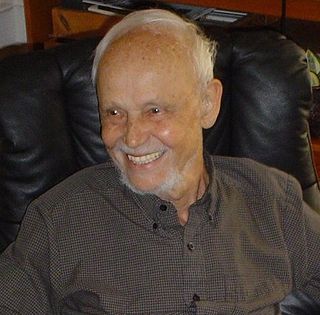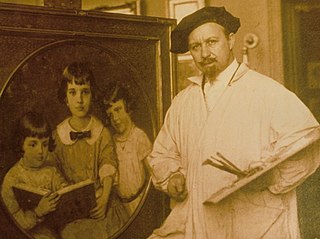A Quote by Barbara Brennan
Through experiments over the past few decades physicists have discovered matter to be completely mutable into other particles or energy and vice-versa and on a subatomic level, matter does not exist with certainty in definite places, but rather shows 'tendencies' to exist. Quantum physics is beginning to realise that the Universe appears to be a dynamic web of interconnected and inseparable energy patterns. If the universe is indeed composed of such a web, there is logically no such thing as a part. This implies we are not separated parts of a whole but rather we are the Whole.
Quote Topics
Appears
Beginning
Certainty
Composed
Decades
Definite
Discovered
Does
Dynamic
Energy
Exist
Experiments
Few
Implies
Indeed
Inseparable
Interconnected
Level
Matter
Other
Over
Over The Past
Part
Particles
Parts
Parts Of A Whole
Past
Patterns
Physics
Places
Quantum
Quantum Physics
Rather
Realise
Separated
Shows
Tendencies
Thing
Through
Universe
Versa
Vice
Web
Whole
Related Quotes
Gradually, physicists began to realise that nature, at the atomic level, does not appear as a mechanical universe composed of fundamental building blocks, but rather as a network of relations, and that, ultimately, there are no parts at all in this interconnected web. Whatever we call a part is merely a pattern that has some stability and therefore captures our attention.
Quantum theory thus reveals a basic oneness of the universe. It shows that we cannot decompose the world into independently existing smallest units. As we penetrate into matter, nature does not show us any isolated "building blocks," but rather appears as a complicated web of relations between the various parts of the whole. These relations always include the observer in an essential way. The human observer constitute the final link in the chain of observational processes, and the properties of any atomic object can be understood only in terms of the object's interaction with the observer.
The universe does not exist 'out there,' independent of us. We are inescapably involved in bringing about that which appears to be happening. We are not only observers. We are participators. In some strange sense, this is a participatory universe. Physics is no longer satisfied with insights only into particles, fields of force, into geometry, or even into time and space. Today we demand of physics some understanding of existence itself.
We have reversed the usual classical notion that the independent "elementary parts" of the world are the fundamental reality, and that the various systems are merely particular contingent forms and arrangements of these parts. Rather, we say that inseparable quantum interconnectedness of the whole universe is the fundamental reality, and that relatively independent behaving parts are merely particular and contingent forms within this whole.
I believe that the universe is one being, all its parts are different expressions of the same energy... parts of one organic whole.... (This is physics, I believe, as well as religion.) The parts change and pass, or die, people and races and rocks and stars; none of them seems to me important in itself, but only the whole. This whole is in all its parts so beautiful, and is felt by me to be so intensely in earnest, that I am compelled to love it, and to think of it as divine.
Entanglement can best be understood as this: When subatomic matter is in a process together, subsequently the subatomic particles go apart from each other and go across the universe. When they do this, they will remain entangled. That means if you do something to one, the other one responds immediately, instantaneously.
There's stable subatomic particles - protons, neutrons, electrons - and then there's unstable ones that decay into stable ones. One will become many. There's this constant process of transformation that underlies everything in the entire universe. They also make these beautiful marks through time. It's like the universe was drawing, essentially, at this fundamental level. There's always an alphabet that's based in natural patterns. Sometimes they're just by themselves, sometimes they build up these other things that relate to the conception, that are more at our level of existence.
Ancient wisdom and quantum physicists make unlikely bedfellows: In quantum mechanics the observer determines (or even brings into being) what is observed, and so, too, for the Tiwis, who dissolve the distinction between themselves and the cosmos. In quantum physics, subatomic particles influence each other from a distance, and this tallies with the aboriginal view, in which people, animals, rocks, and trees all weave together in the same interwoven fabric.
This whole electric universe is a complex maze of similar tensions. Every particle of matter in the universe is separated from its condition of oneness, just as the return ball is separated from the hand, and each is connected with the other one by an electric thread of light which measures the tension of that separateness.
